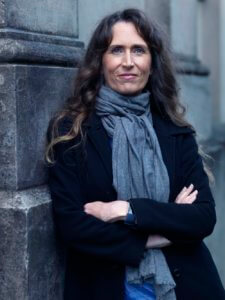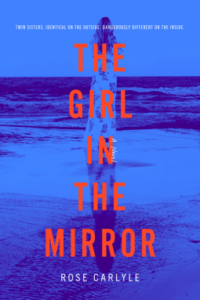Why do we read novels? We all know they aren’t true, but we allow ourselves to believe, to get caught up as though in a dream. Readers’ willingness to suspend disbelief is perhaps one of the strangest things about fiction. However, there are limits. Some readers will happily swallow stories with fanciful creatures, sci-fi marvels, and magic, as long as there are no unlikely coincidences. Others draw the line at anything supernatural, and a few prefer fiction to be so realistic it reads like a history textbook.
It’s a conundrum many budding authors struggle with. Readers will say they had trouble believing in a story not because the hero was a talking frog but because he said something “out of character.” (What is “in character” for a frog?) Sometimes, crazy behavior from fictional characters is fine; other times, we object as readers because “I wouldn’t have done that if I was her”—even though we know the story is not about us.
The irony is that real life often furnishes stories more far-fetched than anything found within the pages of a novel. Often, novelists must tone down the truth in order to write a plausible tale.
In my debut thriller, The Girl in the Mirror, several plot points are unremarkable compared with the true stories from which I drew inspiration. The novel features twins so alike that friends and family cannot tell them apart. Of course, most people can distinguish twins they know well, but there are exceptions. A friend of mine dressed her identical triplet sons in a trademark color every school day for a year—one blue, one red, one green—and yet, at the end of the year, the teacher still found it easier to address all of the boys by their surname. Another friend had identical twin daughters who were perhaps worse off than the triplets: their own father had given up guessing which was which. He simply called both of his daughters “Twinnie.” These real-life examples gave me confidence that the family in The Girl in the Mirror might be fooled, especially if the deception were deliberate. My characters had good excuses for failing to distinguish the twins. The mother is partially blind, the brother is living overseas, and while the young stepson possibly does know the truth, he is mute. All the same, the reader suspects this caper won’t end well.
My novel portrays a sailing voyage across the Indian Ocean, and I knew readers might question some of the decisions made by my characters when far from civilization (my editor certainly did). Would a father really set sail for India from Thailand and then turn in for the night, leaving his thirteen-year-old daughters to steer the craft on their own? In truth, children as young as eleven have been left in charge of oceangoing yachts, and a fourteen-year-old girl, Laura Dekker, has sailed all the way around the world by herself. Even my own sons, aged fourteen and twelve, took regular solo watches on our family’s Indian Ocean yacht voyage.
Sailors fear falling overboard more than anything else that might happen at sea. The movie Open Water 2: Adrift captures the horrific consequences of jumping off a boat without first checking that the swimming ladder has been deployed. Another danger is that the yacht may drift out of reach while the crew are enjoying their swim. Even when apparently becalmed, an unexpected puff of air can set a yacht moving faster than an Olympian swimmer can chase it. Also, the disturbance of a person jumping into the water is said to cause the nearest oceanic whitetip shark to turn and swim straight towards the sound.
And yet I have, on rare occasions, not only chosen to swim while deep out to sea, but allowed my children to join me. After endless sweltering days crossing the equator, making little progress or even going backwards, nothing is as alluring as that cool water. We always took precautions, keeping one adult on deck, slipping into the water without a splash, and getting out within minutes. Those precious moments floating above a mile or more of sea, with nothing but blue stretching towards the sky in every direction, were worth the frisson of fear. We felt we were on the very edge of existence. Never have I felt more alive. And so in my novel, the heroine, Iris, cannot resist a life-changing mid-ocean swim.
Perhaps the strangest true story behind The Girl in the Mirror is that of the eccentric Canadian millionaire Charles Millar. In my novel, the patriarchal Ridge Carmichael leaves his fortune to the first of his children to give him a grandchild. It seems improbable that any man would use his fortune to tempt his offspring into a fertility race, but here again, the truth outstrips fiction. In 1926, Millar left his millions to the woman who could produce the most babies within a decade of his death. As the world entered the Great Depression, many families endured severe hardship by producing more children than they could afford in hopes of winning the prize. The gruesome details of the contest make for heartbreaking reading: one woman was excluded after giving birth to ten children because not all were born in wedlock; another lost an infant to injuries inflicted by rats. After numerous lawsuits, the money was divided between four married women who had given birth to nine children each.
In comparison, the race between Iris, Summer, and their five younger siblings to produce just one child seems positively benign. But you need only pick up a newspaper to find that truth is not only stranger than fiction, it is often crueler, too.
And perhaps that offers an answer to the question why we read novels. Most of us read not for realism but for escape. In the fictional world, we can believe that whatever unlikely challenges our heroes face, they will overcome them. As Oscar Wilde said, that is what fiction means.
 About the Author: Rose Carlyle is a lawyer and keen adventurer. She has crewed on scientific yachting expeditions to subantarctic islands and has sailed with her family from Thailand to South Africa. She lives in New Zealand with her three children. The Girl in the Mirror is her first novel.
About the Author: Rose Carlyle is a lawyer and keen adventurer. She has crewed on scientific yachting expeditions to subantarctic islands and has sailed with her family from Thailand to South Africa. She lives in New Zealand with her three children. The Girl in the Mirror is her first novel.
Follow Rose on Twitter: @RCarlyleAuthor
Like Rose on Facebook: facebook.com/RCarlyleAuthor
Follow Rose on Instagram: @rosecarlyle100

About the Book: Twin sisters Iris and Summer are startlingly alike, but beyond what the eye can see lies a darkness that sets them apart. Cynical and insecure, Iris has long been envious of Summer’s seemingly never-ending good fortune, including her perfect husband Adam. Called to Thailand to help her sister sail the family yacht to the Seychelles, Iris nurtures her own secret hopes for what might happen on the journey. But when she unexpectedly finds herself alone in the middle of the Indian Ocean, everything changes. When she makes it to land, Iris allows herself to be swept up by Adam, who assumes that she is Summer.
Iris recklessly goes along with his mistake. Not only does she finally have the golden life she’s always envied, with her sister gone, she’s one step closer to the hundred-million-dollar inheritance left by her manipulative father. All Iris has to do is be the first of his seven children to produce an heir.
Iris’s “new” life lurches between glamorous dream and paranoid nightmare. On the edge of being exposed, how far will she go to ensure no one discovers the truth? And just what did happen to Summer on that yacht?
Only Iris knows . . .
